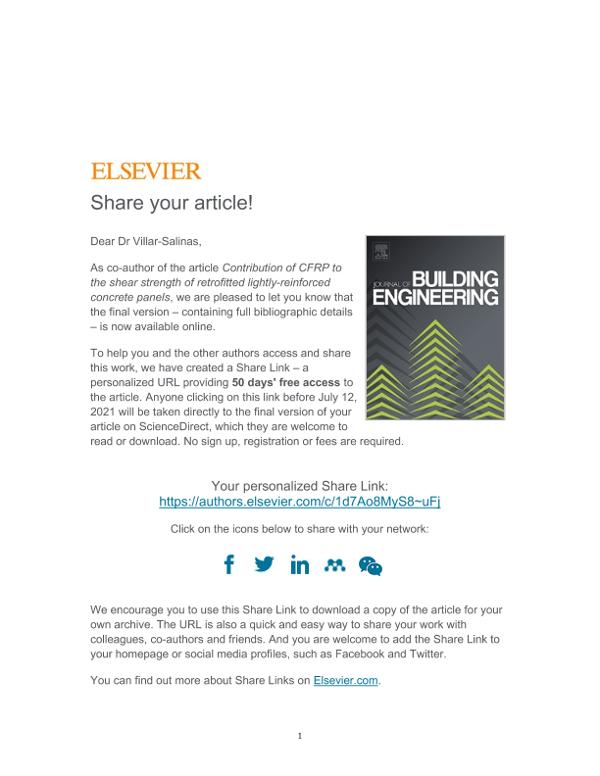Abstract
Low-rise buildings with thin Reinforced Concrete (RC) walls that do not comply with the minimum web shear
reinforcement prescribed by current earthquake-resistant codes can be found in some Latin American countries.
Previous experimental studies evidence that Carbon Fiber Reinforced Polymers (CFRP) strips may be used to
retrofit RC walls for shear forces. The two models available in the literature to predict the contribution of CFRP
to the shear strength of RC walls exclude key variables for assessing the seismic performance of lightlyreinforced concrete walls retrofitted with CFRP. In this research, a model for predicting the contribution of
CFRP to the shear strength of lightly-reinforced concrete panels is initially developed. A model to correlate the
contribution of CFRP to shear strength of lightly-reinforced concrete panels with that of thin and lightlyreinforced concrete walls is also proposed. The experimental program includes cyclic diagonal compression
tests on fourteen lightly-reinforced concrete panels: one plain concrete panel and thirteen panels reinforced
internally with web shear reinforcement-ratio equal to 0.11%; twelve retrofitted with CFRP, and one RC panel
retrofitted with a concrete overlay conventionally reinforced with a welded-wire mesh. The CFRP
configuration were diagonal or horizontal with one strip, and diagonal or horizontal with three strips. Three
volumetric ratios of CFRP were studied in this research: 0.02%, 0.06% and 0.09%. The effectiveness of the
configuration and volumetric-ratio of CFRP on performance of retrofitted panels was evaluated in terms of
cracking patterns, failure modes, shear strength and energy dissipation capacity obtained from shear-strain
curves measured during cyclic diagonal compression tests. The model proposed to predict the contribution of
CFRP to the peak shear strength of retrofitted lightly-reinforced concrete panels depends on the properties,
volumetric ratio and configuration of CFRP on the panel.














